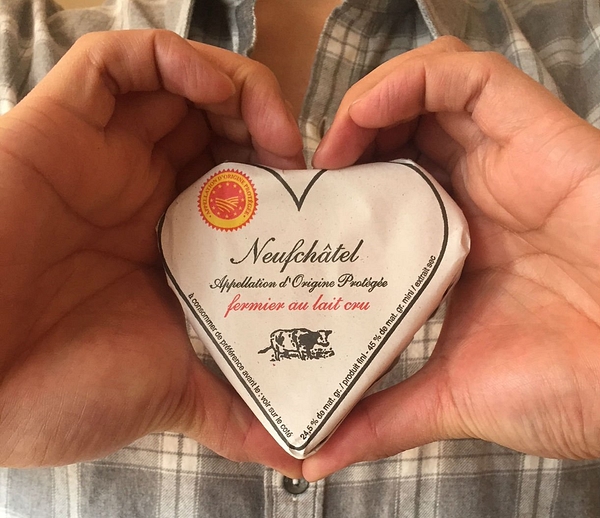
More cautious cheese historians date the ‘official’ birth of Neufchâtel to 1543, when the specific name of this creamy cow’s cheese was first mentioned in the ledgers of the Saint-Aman Abbey in Rouen. By that time however, Neufchâtel was already being matured in the cellars of the region, cleverly ripening with the help of penicillium candidum - a bloomy white mold which also gives Camembert and Brie its typical soft rind. Nowadays producers might spray the cheeses with penicillium candidum to get the process started, but historically the “drying room” would have been the place where a natural rind was formed from the mold already in the air.
Neufchâtel may have only been written down in 1543, but its lovely heart-shape has its roots in the Hundred Years’ War (1337 -1453). Legend has it that when the English invaders occupied the region, the women of Neufchâtel-en-Bray were quite taken with the soldiers and began moulding cheeses into heart shapes to express their admiration. Well if cheese doesn't say 'love', we don't know what does. Neufchâtel is famous for its heart-shape, but you can in fact still find it as a cylinder or a brique - an oblong shape.
In 1969, Neufchâtel received its AOC status, so that downy rind and mushroomy taste is now well protected. A handy bit of French vocabulary for describing the Neufchâtel rind is duveteux - downy - a word that perfectly captures that soft, velvety rind.

Inside, the pâte - the interior of the cheese - is slightly grainy in texture and quite firm, with a hint of saltiness. Enjoy it with crusty baguette and a robust red wine, or consider toasting your bread with the cheese on top for a Normandy classic. Delicieux!
A little note for all our American friends out there! Neufchâtel probably sounds very familiar to you, and of course the original French cheese inspired the American cream cheese you may know and love. The story goes that an American cheesemaker added cream to Neufchâtel and discovered the joys of cream cheese - but however it came about, the Neufchâtel you find on the supermarket shelves is very different from Normandy Neufchâtel. For one, AOC Neufchâtel is made with raw milk while American Neufchâtel is pasteurized. All this can only mean one thing - it must be time to come over and do a taste test! (Any excuse…)

